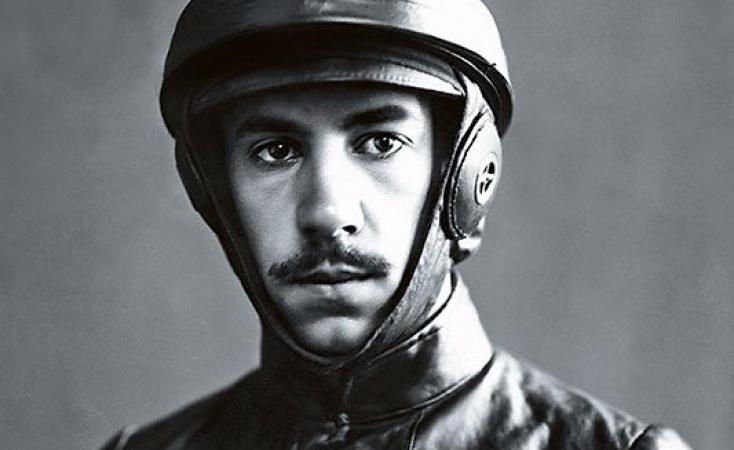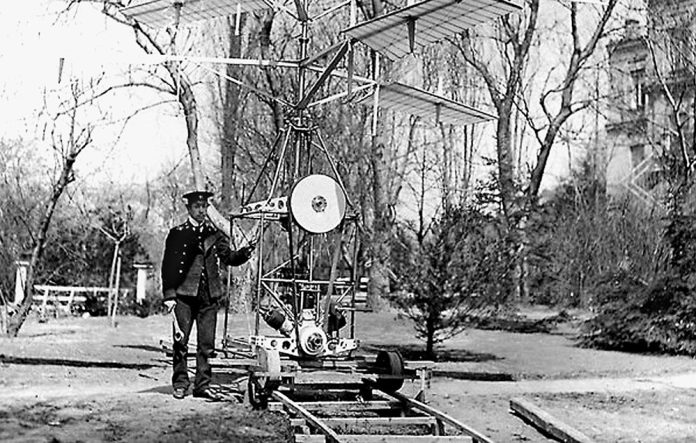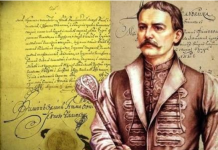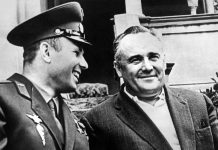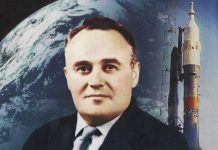“As time went on, I became well acquainted with the various aeronautical engines, having spent much time in a few factories, and finally made a choice of an engine. It was the product of a small shop situated at that time in Asniers sur Seine, on the outskirts of Paris. Some thirty-five men represented the whole force, together with the owner and designer of the engine, Mr. Alexander Anzani, who was a sportsman and builder of racing motor-cycles. The Anzani aero¬ plane motor was by far the simplest engine available. It was a direct development of a motor-cycle engine with three, instead of the conventional two, cylinders… It was at the factory, while awaiting delivery of the engine, that I met Louis Bleriot, who had also placed an order for a similar engine. A few months later he crossed the English Channel in his small monoplane, powered with a 25 h.p. Anzani motor, thereby reaping well-deserved fame and fortune for himself, as well as for the engine which had carried him safely across.
A few other parts of the flying machine were ordered, and made in accordance with my sketches, and early in May I returned to Kiev, and started the construction of my first helicopter. Captain Ferber and the well-known scientist-designer of early propellers, Drjevietzky, strongly advised me against spending my time and effort on a helicopter. Drjevietzky even wrote an article for one of the magazines entitled, “The Wrong Way,” in which he explained the hopelessness of the helicopter proposition. Both of them may have been right, at least at that time, but I was so much attached and interested in my first attempt that I did not wish to drop the matter and decided to work on it until it materialized…
I saw aeroplanes and I, myself, was working on a helicopter, and I got hold of some fundamental ideas on methods of creative development work in a new branch of engineering, where reliable information was scarce. This being the case, it was necessary to rely on intuition, which at an early period is often the major source of information in inventive engineering work…
At the beginning of May, 1909, not yet twenty years old, with a few ideas, no experience, some caution and, of course, with plenty of enthusiasm, I started the construction of my first flying machine. At that time, I had no mechanics or workmen to assist me. I had brought back from Paris the transmission and shafts which were built there in accordance with my drawings. I ordered other parts and materials from Kiev and did all the assembly work myself. It was really a wonderful feeling to see how the strange-looking machine which I had been dreaming and thinking about was gradually taking shape in one of the rooms in our house, which had been transformed into a shop
The helicopter had a wooden frame similar to a large rectangular box, with a 25 h.p. Anzani engine on one side and the proposed seat or platform for the operator on the other. In the centre of the frame was the transmission box. A large wooden pulley was connected by a four-inch-wide belt to a smaller pulley on the motor. Two concentric vertical tubular shafts were connected with the transmission box and were guided by an upper bearing at the top of the frame. On each of the shafts there was mounted a two-bladed lifting propeller, the upper one having a diameter of about fifteen feet, and the lower one sixteen and a half feet. They rotated in opposite directions at the rate of 160 r.p.m. The blades were supported by piano wires which were connected to two rings fixed to each shaft above and below each propeller. By changing the length of the wires by the use of turnbuckles, it was possible to adjust the pitch of the lifting pro¬ pellers. On the basis of results obtained with small models, I intended to produce a forward motion and to regulate the speed by inclining the machine forward. This I expected to obtain by the use of control surfaces that were to be placed below the outer part of the lifting propellers. I intended to adjust them so as to obtain the desired results from the air pressure created by the combined action of the slip¬ stream and of the forward motion. Control surfaces were not built for this machine because it appeared desirable first to make a test of the proper operation of all mechanisms and to check the lifting capacity. During the month of July, the helicopter was completed and the tests were started…
I gave more gas and nearly lost the machine because immediately the helicopter started to turn over towards the heavier side where the engine was located. I jumped on the frame and throttled the engine and the machine returned to normal position. This negligible incident made me very happy. For the first time I could feel the power of the machine and, as I thought, the helicopter showed a readiness to go into the air. I can remember very precisely my impression that when I stood on the frame of the machine which was about one foot above the ground, while the other end was still on the ground, that the end on which I was standing did not fall but was gradually pushed downwards against some force which was supporting it…
During the next test, when still more power was applied, the whole frame, while still on the ground, started to rotate around the main axle. It was not violent and I could stand on the platform holding fast to the frame. This was simple to explain and also to adjust. By releasing some of the wires which supported the propeller blades and tightening the others, it was possible to adjust the pitch of the propellers in such a way as to equalize the torque, or rotational force. When this was done, the “waltz¬ ing ” of the helicopter nearly ceased, but it still remained extremely sensitive and usually a small amount of rotation of the frame with the motor and observer always remained when tests were made with nearly full power on. It was pleasant and encouraging to feel the machine slowly turning and displacing itself gradually along the ground, assisted by the vibrations of the engine and transmission. It was easy to feel that the supporting propellers were already carrying a large part of the weight of the helicopter, including the fuel and the “ pilot”…
However, two important facts of a different nature also gradually became evident. It was clear that this machine would not be able to lift itself with a man on board. Further, it would hardly be possible to control the machine by the means originally designed, which consisted of a few auxiliary surfaces situated in the stream of the propellers. While a direct test of this had not yet been made, I could see that the wind created by the huge propellers was rather gentle, while the forces necessary to maintain the proper position proved to be considerable. Besides this incident, the machine once started to turn over when a gust of wind came while the propellers were working at nearly full speed. A quick throttling down prevented trouble, but the necessity of a power control to act under all conditions became evident. The tests and experimental work, however, proved to be very interesting and instructive. I learned much by working from early morning until late in the night and by gradually eliminating the few major, and multitude of minor, troubles. This was all excellent training. By fixing the troubles, reinforcing the parts which would not stand up, adjusting the various mechanisms which would permit the whole machine to run for several minutes at a time at full power, I could learn what could not be obtained from books. The practical experience gained was very valuable, but with knowledge came the realization that the first helicopter would never get me in the air. Having arrived at this conclusion, I decided to change the programme of tests in order to obtain more accurate information on the action of the machine. Having lost hope of flying this particular contraption, I arranged a large scale, fixed the helicopter firmly to one side of the scale and loaded it with ballast so as to prevent the machine from turning over under any circumstances. This also excluded the rotation of the gondola which was the usual consequence of most previous tests made at full power. This arrangement permitted testing the machine under any amount of power while making all necessary observations and measurements. Mechanically it functioned at that period satisfactorily, and very few adjustments or repairs were needed even after reasonably long runs. The scale enabled me to measure the lifting force of the propellers under various conditions. The highest lift figure was about 357 pounds; the weight of the helicopter empty was about 100 pounds in excess of that figure. It appeared certain that a more refined design of the lifting propellers, with larger diameter and a more elaborate wing section of the blades, would increase the lifting force substantially. I felt, however, that the machine could never be improved to the extent of being able to take off with a man on board and, therefore, having completed a series of runs with various combinations of propeller blades, I decided early in October, 1909, to discontinue the tests, and to disassemble my first flying machine. This machine was a failure to the extent that it could not fly. In other respects it was a very important and necessary stepping stone.
I realized that success at that time could not be achieved by producing one particular flying machine. What appeared to be needed was a decision to gather much more knowledge and experience covering various phases of the new art, and continuing to work hard, readjusting the programme if necessary. Although plans for a new and improved helicopter were well under way at that time, I decided not to start the construction for a few months, and in the meanwhile to do other work and to visit the flying fields in Paris again.” (I. Sikorsky, Winged S)
PART 1. Igor Sikorsky’s First Helicopters >
< Igor Sikorsky: ‘My family if of purely Ukrainian origin’
